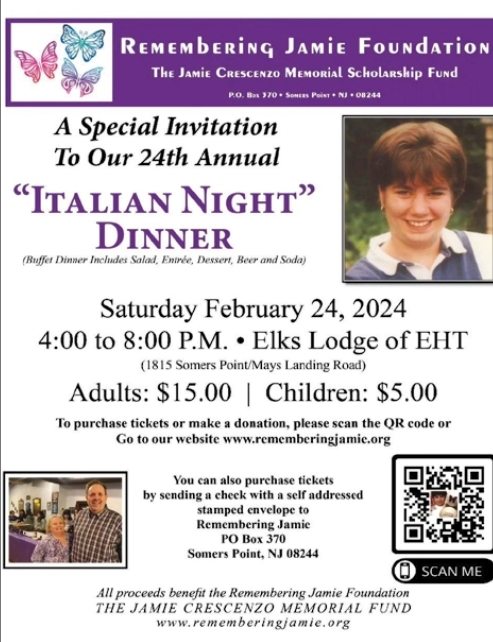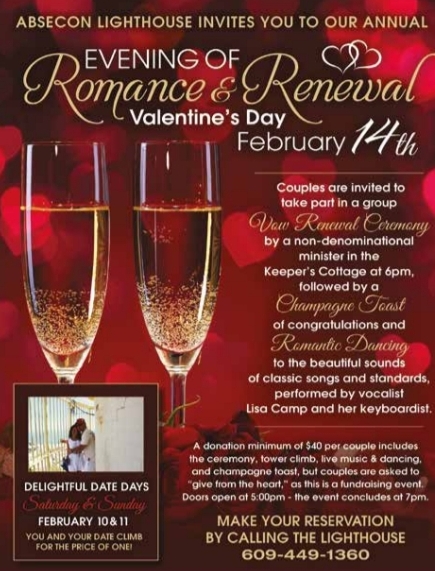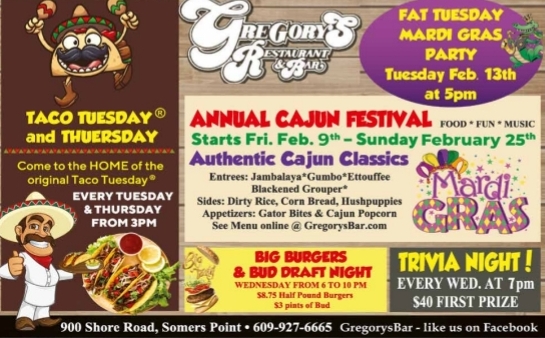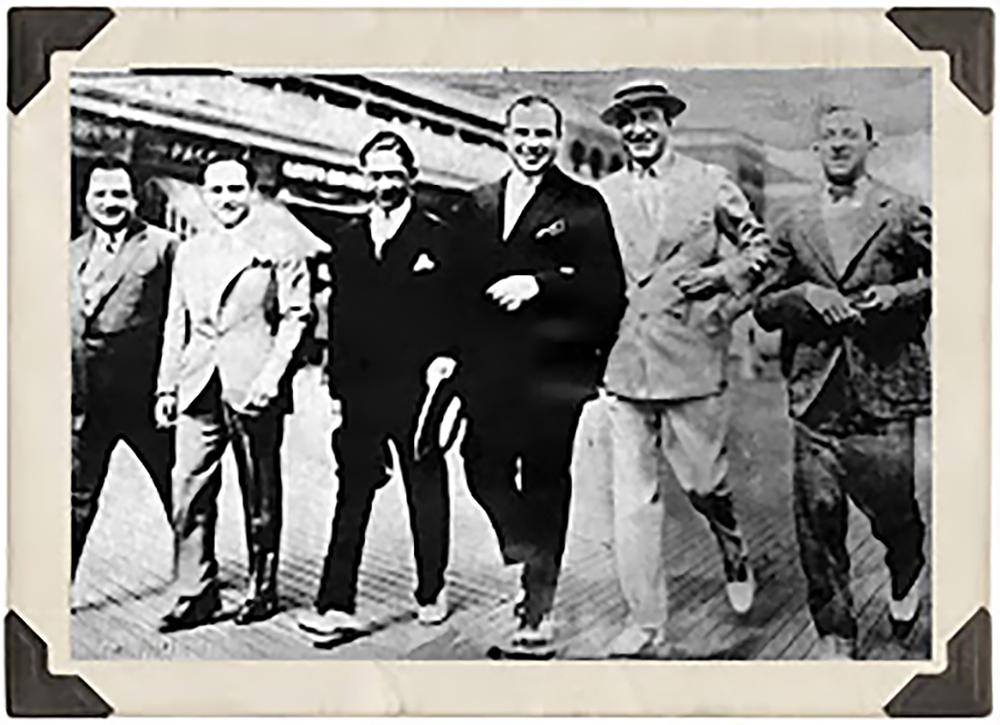By William Kelly
There isn’t an Atlantic City Mob Museum, yet, but there should be one.
The Las Vegas Mob Museum is now the most popular tourist attraction in Vegas outside of the casinos, even though the history of the mob there pales in comparison to Atlantic City.
While mobsters didn’t arrive in Las Vegas until Bugsy Siegel built his Flamingo Hotel-Casino in 1946, Atlantic City has a history of mobsters dating back to the 1890s, and is infamous for the long reigns of such noteworthy city bosses as Enoch “Nucky” Johnson and Hap Farley for most of the 20th century.
The Vegas Mob Museum even celebrated the 1929 Atlantic City Conference of crime bosses from around the country in an exhibit focusing on Al Capone’s attendance at the proceedings. The conference was ostensibly held to celebrate Meyer Lansky’s wedding, but the actual reason was to decide what to do with Capone: the mob boss behind the infamous St. Valentine’s Day Massacre in Chicago which killed seven and brought unwanted scrutiny on all of the mobsters.
Lansky kept a low profile because he wasn’t Italian like most of the mobsters; he was a Jewish accountant who handled the mob’s money. The organization, at least in New York City, was run by old-timers they called “Mustache Petes,” who were at war with one another. Lansky was childhood friends with Charles “Lucky” Luciano and Bugsy Siegel, who were in the mafia and were preparing to take over the rackets after the Mustache Petes killed each other off.
Luciano called for the 1929 conference and arranged for it to be held in Atlantic City, which was known as an “open” city where Nucky Johnson ran things. Luciano invited all the big-city mob bosses from around the country to be there. The new Convention Hall on the Boardwalk had just been completed, and the mobsters mostly stayed at the President Hotel at the south end of the Boardwalk. They met casually at bars and restaurants, and walked along the beach in small groups so the sounds of the breaking waves drowned out their conversations.

The main topic was what to do with Capone, who brought the heat down on all of them by killing off Bugs Moran’s gang in the St. Valentine’s Day Massacre that same year. While they discussed what to do with him, Capone reportedly hid out in the men’s locker room of the Atlantic City Country Club in Northfield.
Another topic on the agenda was a permanent solution to mob violence. Luciano advocated Lansky’s proposal – to run their businesses like major corporations do, complete with a board of directors. If there were a problem between different city mobs, the board would negotiate a solution. They were called the National Syndicate of Organized Crime or just the Syndicate, while the board was called the Commission. Luciano was appointed the chairman, while big-city bosses would have “sitdowns” together including bosses from Philadelphia, Boston, New Orleans, Chicago, Tampa and Havana.
Most of their profits at the time were generated by bootlegging. The end of prohibition was coming which meant that they would have to get into other businesses. Lansky proposed gambling: big-time casino gambling beginning in Florida and Havana where Lansky had connections with the Cuban dictators, especially Fulgencio Batista. Lansky arranged for legal Havana casinos to be located only in large hotels, and the Syndicate bosses would own all those hotels, mainly patronized by American tourists.
As for Capone, he had to take the rap for the St. Valentine’s Day Massacre and do jail time. So he took a train to Philadelphia where he was met by a friendly policeman he knew, turned over his revolver, and was arrested for having the weapon. Given a one-year sentence handed down by a bought-off judge, Capone was incarcerated at Eastern State Penitentiary, now a popular Philadelphia museum, where his cell is a prime tourist attraction. He was allowed to have rugs, a lounge chair, a comfortable bed, a radio and had food catered to him until he was released after nine months on good behavior.
Luciano was also arrested and put in jail, but during World War II he made a deal to help US Navy Intelligence protect American docks and shipping from Nazi saboteurs, paving the way for the successful invasion of Sicily. He was released from prison because of his patriotic assistance to the war, but he was forced into exile, first going to Havana, then a popular tourist and gambling destination for Americans, where they held another conference before Luciano retired to Italy.
When the Mustache Petes faded away, Luciano took control of New York where there were five mafia families. Other areas with representatives on the board included Angelo Bruno of Philadelphia, Carlos Marcello of New Orleans, Russell Buffalino of Northeast Pennsylvania, Sam Giancana of Chicago, and Santo Trafficante of Tampa and Havana. Each one of these bosses was given a percentage of the casino profits – illegal casinos in Saratoga, N.Y., Florida, and legal casinos in Havana and Las Vegas.

When the Flamingo, Bugsy Siegel’s hotel casino in Las Vegas, opened in 1946 and quickly foundered, the mob bosses were tired of his excuses and bankrolling him. He owed them $10 million, an unpayable amount, so on the orders of the Commission he was killed – shot in the head by a sniper as he sat in the Hollywood apartment of his girlfriend, Virginia Hill.
With Luciano gone, the five New York mafia families fought among themselves and Sam Giancana assumed a leadership role, obtaining control of all the mob rackets west of Chicago including Detroit, California, and Las Vegas, where his right-hand man, John Rosselli, was put in control.
Old man Joe Kennedy owned many of the Canadian whiskey and Caribbean rum companies, which were legal in those countries. Kennedy sold his liquor to American bootleggers in the prohibition era, including Nucky Johnson and Sam Giancana, and he owned a piece of the Cal-Neva Lodge casino hotel near Lake Tahoe.
He sold his Tahoe interests to Giancana who had his friend, Frank Sinatra, front for him as the owner. Sinatra brought in his trusted friend, Skinny D’Amato, to run the casino.
D’Amato owned the 500 Club in Atlantic City where Sinatra often performed. D’Amato’s family ran the 500 Club while Skinny was in Nevada. Sinatra was also pals with Joe’s son, Senator John Kennedy, future president of the United States. They drank, smoked cigars and had romantic ties to the same women, including Judith Campbell, who was also Giancana’s girlfriend.
When JFK ran for president, Sinatra provided his theme song, “High Hopes,” and D’Amato helped JFK win the critical West Virginia primary to get him the nomination. Giancana ensured that Illinois would go with Kennedy in the election. Sinatra was put in charge of providing the entertainment for Kennedy’s inauguration and helped arrange for Atlantic City to get the 1964 Democratic National Convention when it was assumed Kennedy would be renominated. Events would play out differently, however.
Judith Campbell served as a courier between JFK and Giancana, and even visited the White House. But when FBI Director J. Edgar Hoover found out about the relationship, he warned the president through Kennedy’s brother, Attorney General Robert F. Kennedy, that the FBI was onto the relationship and that it was unwise and dangerous. So Kennedy broke off his association with Campbell and Giancana, as well as Sinatra. Giancana and Sinatra didn’t like having a falling out with the president, whom they helped get elected, especially when JFK’s brother began to prosecute the mobsters.
Then, just like Bugsy Siegel, JFK was shot in the head by a sniper and killed. While Lee Harvey Oswald was blamed for the crime, Giancana and Rosselli were considered suspects, and Rosselli was murdered shortly after testifying in a secret congressional session about the assassination. Giancana was killed shortly before he was to testify. All of this is the subject of a major motion picture, now in production, titled “2 Days, 1963.” Directed by David Mamet, it stars Al Pacino, Sylvester Stallone, Shia LaBeouf and Courtney Love.
So when the Super Bowl is played in Las Vegas this weekend, the most popular tourist attraction besides casinos and football will be the Las Vegas Mob Museum where you can learn all about the history of organized crime, the Syndicate and the Commission and how it all began in Atlantic City.
The Mob Museum, which opened in 2012, is a nonprofit corporation, but is very successful, charging $25 admission and featuring photos, films and lectures. Such a museum should be established in Atlantic City, with seed money from the Atlantic City Casino Reinvestment Development Authority and a building furnished from unused property owned by the city.
Right now there is no Atlantic City Mob Museum, but there should be and can be, if the powers that be deem it worthwhile.
NOTE ABOUT SOURCES – Information about the 1929 conference of mob bosses in Atlantic City can be found on the Las Vegas Mob Museum website. Background on Joe Kennedy, Sam Giancana, Cal-Neva Lodge, Judith Campbell and JFK is from Seymour Hersh’s “The Dark Side of Camelot.” The best source on Skinny D’Amato, Frank Sinatra and the 500 Club is Jonathan Van Meter’s “The Last Good Time.”










